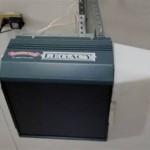How To Build A Garage Storage Shelf
Garage storage is frequently a challenge for homeowners. Items tend to accumulate, leading to clutter and reduced usability of the space. Installing garage storage shelves provides a practical and customizable solution for organizing tools, equipment, seasonal decorations, and other belongings. This article outlines the process of constructing sturdy and functional garage storage shelves, covering planning, material selection, construction steps, and safety considerations.
Planning and Design
Before commencing the physical construction, a detailed plan is crucial for ensuring the finished shelves meet specific storage needs and fit the available space. The initial step involves assessing the garage layout. Measure the wall space where the shelves will be installed. Consider the height, width, and depth requirements based on the items to be stored. It is advisable to make a sketch of the proposed shelving unit, including dimensions of each shelf and the overall frame.
Determine the type of items that will be stored on the shelves. Heavy items, such as car parts or paint cans, necessitate stronger supports and thicker shelving material. Lighter items, like holiday decorations or sporting goods, may allow for lighter-duty construction. Consider the weight capacity for each shelf to ensure structural integrity and prevent collapse. A safety factor should be included when calculating weight capacity. For instance, if a shelf is expected to hold 100 pounds, design it to handle at least 150 pounds.
Select the optimal shelf configuration. Common configurations include wall-mounted shelves, freestanding shelves, and overhead storage systems. Wall-mounted shelves are attached directly to the wall studs, offering a clean and space-saving solution. Freestanding shelves provide flexibility and can be moved as needed, but they occupy more floor space. Overhead storage systems utilize the vertical space above vehicles, maximizing storage capacity but requiring careful planning and sturdy installation.
Consider future storage needs. As storage requirements change over time, the shelving system should be adaptable. Adjustable shelf heights provide flexibility for accommodating items of varying sizes. Modular designs allow for easy expansion or reconfiguration of the shelving unit. Planning for future needs will maximize the long-term utility of the garage storage shelves.
Finally, compliance with local building codes and regulations is essential. Check local ordinances regarding shelving construction, particularly for overhead storage systems. Obtain any necessary permits before commencing construction. Adhering to building codes ensures the safety and legality of the shelving installation.
Material Selection and Preparation
Choosing the appropriate materials is critical for the durability and stability of garage storage shelves. Several factors influence material selection, including cost, strength, aesthetics, and ease of use. The primary materials required include lumber for the frame and shelving, fasteners (screws, nails, and bolts), and finishing materials (paint or sealant).
For the frame, select lumber that is strong and resistant to warping. Pressure-treated lumber is suitable for garages with high humidity or potential water exposure. Dimensional lumber, such as 2x4s or 4x4s, is commonly used for constructing the frame. Consider using kiln-dried lumber to minimize shrinkage and warping after installation. In some instances, metal framing can also be used, offering superior strength and resistance to pests.
For the shelving, options include plywood, particleboard, and solid wood. Plywood provides a good balance of strength and affordability. Particleboard is less expensive but more susceptible to moisture damage and may sag under heavy loads. Solid wood offers superior strength and aesthetics but is typically more expensive. Consider the thickness of the shelving material based on the anticipated weight load. Thicker shelves provide greater support and reduce the risk of sagging.
Select the appropriate fasteners for assembling the shelving unit. Screws provide greater holding power than nails and are recommended for most applications. Use screws that are long enough to penetrate deeply into the lumber but not so long that they protrude through the other side. For heavy-duty applications, consider using bolts with washers and nuts to provide additional strength.
Prepare the materials before commencing construction. Cut the lumber to the required lengths using a saw. Sand the edges of the shelving material to remove splinters and create a smooth surface. Pre-drill holes for screws to prevent splitting the wood. Apply a sealant or paint to protect the wood from moisture and pests. This step significantly extends the lifespan of the shelving unit.
Gather all necessary tools and equipment. Essential tools include a measuring tape, level, square, saw (circular saw or hand saw), drill, screwdriver, hammer, and safety glasses. Having all tools readily available streamlines the construction process and minimizes delays.
Construction Steps
The construction process involves assembling the frame, attaching the shelving, and securing the unit to the wall or floor. Follow a systematic approach to ensure accuracy and structural integrity. Starting with the frame construction, assemble the frame members according to the planned design. Use screws or bolts to join the pieces together. Ensure that the frame is square and level. Use a level to check the horizontal and vertical alignment of the frame members.
Attach the shelving to the frame. Use screws to secure the shelving to the frame members. Ensure that the screws are spaced evenly and penetrate deeply into the frame. For wall-mounted shelves, attach the frame to the wall studs using lag screws or bolts. Locate the wall studs using a stud finder. Ensure that the shelves are level before securing them to the wall. For freestanding shelves, ensure that the base is stable and does not wobble. Consider adding adjustable feet to level the shelves on uneven surfaces.
Reinforce the shelves as needed, particularly for heavy-duty applications. Add additional supports underneath the shelves to prevent sagging. Use metal brackets or wood supports to reinforce the shelves. Space the supports evenly along the length of the shelves. For overhead storage systems, use heavy-duty supports and ensure that the unit is securely attached to the ceiling joists. Consider consulting a professional contractor for overhead storage installations.
Finishing touches enhance the aesthetics and durability of the shelving unit. Apply a coat of paint or sealant to protect the wood from moisture and pests. Add edge banding to the shelves to create a finished look and prevent chipping. Install shelf liners to protect the shelves from scratches and spills. Label each shelf to identify the contents for easier organization. Install lighting to improve visibility, especially in darker areas of the garage.
Safety is paramount throughout the construction process. Wear safety glasses to protect your eyes from debris. Use gloves to protect your hands from splinters. Use a dust mask to avoid inhaling sawdust. Follow all safety instructions provided by the tool manufacturers. If unsure about any aspect of the construction process, consult a professional contractor.
Enhancements and Considerations
Several enhancements can be incorporated into the shelving design to improve functionality and organization. Consider adding drawers, cabinets, or pegboards to the shelving unit. Drawers provide enclosed storage for small items, while cabinets offer concealed storage for larger items. Pegboards are useful for organizing tools and equipment. Bins and containers help organize small items, such as nuts, bolts, and screws. Clear containers allow for easy identification of the contents.
Adjustable shelf heights provide flexibility for accommodating items of varying sizes. Use shelf supports that can be easily repositioned. Install shelf standards with slots or holes for adjustable shelf supports. Consider using wire shelving, which is lightweight and allows for air circulation. Wire shelving is particularly useful for storing items that need to be ventilated, such as sporting equipment or wet items.
Proper maintenance ensures the longevity and functionality of the storage shelves. Regularly inspect the shelves for signs of damage or wear. Tighten any loose screws or bolts. Repair any cracks or splits in the wood. Clean the shelves regularly to remove dust and debris. Avoid overloading the shelves, as this can lead to sagging or collapse. Redistribute the weight on the shelves as needed to maintain balance.
Consider the overall aesthetics of the garage when designing the shelving unit. Choose materials and finishes that complement the existing decor. Paint or stain the shelves to match the walls or other garage features. Install decorative trim or molding to enhance the appearance of the shelves. A well-designed shelving unit can improve the overall appearance of the garage and create a more organized and functional space.
Finally, periodically re-evaluate storage needs and adjust the shelving configuration as necessary. Remove items that are no longer needed to prevent clutter. Reorganize the shelves to optimize space and accessibility. Adapt the shelving unit to accommodate changing storage requirements.

How To Build Shelving In A Garage Three Ways Ana White

Best Diy Garage Shelves Attached To Walls Ana White

Easy Diy Garage Shelves With Free Plans Fixthisbuildthat

Diy Garage Shelves 5 Ways To Build Yours Bob Vila

How To Build Diy Garage Storage Shelves Crafted Workshop

How To Build Garage Shelving Easy Cheap And Fast Youtube

Easy Diy Garage Shelves With Free Plans Fixthisbuildthat

Super Efficient 2x4 Garage Shelves Diy Storage Youtube

How To Build Garage Shelves The Easy Way Infarrantly Creative

Diy How To Build Suspended Garage Shelves Building Strong








